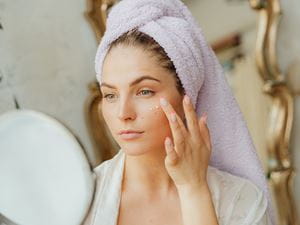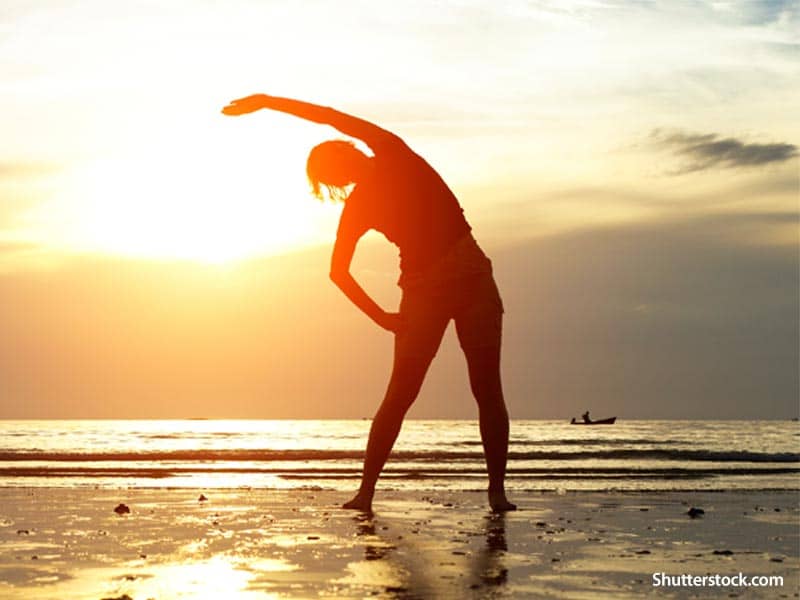
If you spend most of your time outdoors, even when it’s windy and cold, you’re probably mindful about putting on sunscreen and taking care of your muscles and body. However, no matter how cautious you are, you might suffer from a few painful stints of windburn during the winter.
If you’ve ever experienced windburn, you’re aware of the burning, stinging sensation that results from a winter adventure or a simple walk to the store. When your skin is windburned, typically on your face, it develops a reddish appearance, taking “rosy winter cheeks” to the next level, a look not everyone loves.
The next day, your skin feels warm, dry, and painful. It’s not a sharp pain but a tenderness that most people try to alleviate with moisturizer. There might be times when the burning sensation feels intense, but most people could compare it to a mild case of sunburn on the pain scale. According to experts, windburn is pretty normal, with as little as 15 minutes of exposure leading to the condition. In actuality, the skin on your face is quite tender. Here’s a description of what windburn is, what makes it painful, and how to prevent it.
What is windburn?
According to Dr. Adam Friedman, professor and chair of dermatology at the George Washington University School of Medicine, windburn is damage to the skin barrier, causing the top layer of your skin, or the stratum corneum, to dry out. When the wind hits our skin, it extracts water via convection. This is why you’re more likely to get windburn after snowboarding, skiing, cycling outside, or any activity that increases wind resistance. The top skin layer doesn’t need much water to function, but losing it may mess up the skin cell turnover process, which is also why windburn happens so fast.
Dr. Friedman says that our skin constantly removes dead cells to bring in new ones. When the turning over proves stops, our skin becomes stiff, holding on to dead cells that it should be getting rid of, causing the skin to crack. Windburn can happen anywhere on your body, but most people experience it on their faces. Because facial skin is thinner, it’s more sensitive, according to dermatologist Dr. Rajani Katta. Another element of windburn involves cold hitting the skin, causing blood vessels to dilate. Dr. Friedman says this produces the burning sensation associated with windburn and the dreaded red appearance.
Is windburn related to sunburn?
Some cases of windburn feel similar to sunburn, but Dr. Friedman doesn’t believe that windburn is like sunburn during winter. However, he pointed out that our skin is more sensitive to sun exposure when it doesn’t turn over correctly. If the skin is already inflamed due to windburn, it’ll be more prone to sunburn and vice versa.
According to Dr. Friedman, sunburn influences the skin’s ability to get windburn because the skin doesn’t function properly when you have sunburn because the skin is already dried out. Dr. Friedman says the two can play off each other, but they’re not analogous. He added that UV radiation makes it easier to get windburn, but windburn makes it easier to get sunburn.
How can you prevent windburn?
According to Dr. Friedman and Dr. Katta, the time it takes a person to get windburned depends on various factors, like underlying skin diseases and the location on the body. Higher humidity in the air makes windburn less likely, but the wind hitting your skin will cause it to lose water. That’s why covering your skin is one of the best ways to prevent windburn. Another prevention method is strengthening your skin barrier by using gentle soaps and avoiding hot showers for longer than 10 to 15 minutes, which tend to strip moisture from your skin.
Dr. Katta also advised being careful about the products you use. For example, retinoids in some anti-aging skin products increase the turnover of your skin barrier, which can damage it. Acne medications can also dry out your skin, weakening the skin barrier. Still, Dr. Katta and Dr. Friedman say the best prevention method is protecting your skin using gloves, hats, and masks. When you’re snowboarding, skiing or anything similar, you need a physical protection barrier, like a balaclava.
Moisturizers also offer some protection because it creates a barrier between you and the outside world. However, if you’re going to be out in the cold and wind for an extended period, it’s best to cover your hands and face.
Moisturizing windburned skin.
If you’re experiencing windburn-related pain where anything you put on stings, Dr. Katta recommends wetting your skin before putting on moisturizer. Not all moisturizers are created equal, but thicker products tend to work better. According to Dr. Friedman, ointments are thick, gooey, and tend not to sting. On the other hand, lotions and creams will sting because of what’s in them, like hydroxy acids and preservatives. If the irritation and inflammatory response is severe enough, you may need a topical steroid like hydrocortisone or any other product for treating eczema.
If you’re outside for days at a time, that will prolong your healing process or stop it altogether. You get cracks in your skin. When that happens, it exposes you to skin infections, making you more vulnerable to developing skin allergies. Dr. Katta says she’s had patients who develop allergies to lip balms after their skin gets cracked and dry. Once your skin barrier breaks, your immune system is exposed.
Dr. Friedman called it a compounding effect because you’re going outside daily; it’s not a single exposure, so every day, the injury compounds. The challenging part is that you shouldn’t treat it as it comes but proactively try to prevent it, incorporating it into your daily routine. Thankfully, moisturizing more is a routine change most people can implement.
Windburn is a skin condition that most people don’t know about. It mainly happens when you participate in winter activities like snowboarding and skiing. The best way to prevent windburn is to protect your skin using gloves and masks. Another piece of advice from Dr. Katta? Always protect your lips.

